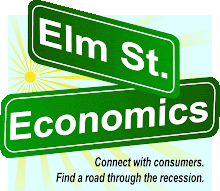There is a cheese company near Rochester, Minnesota, that you’ve probably never heard of. And that is exactly how Pace Dairy seems to like it. You see, there’s no such thing as Pace brand cheese… at least, not that I know of. The company sells its product under an entirely different name: Kroger.
Pace Dairy is a producer of store-branded products. And they’re doing pretty well, thank you. At a time when so many companies are announcing layoffs, Pace is in the process of adding roughly 30 employees, according to recent stories by MinnPost.com and the Rochester Post-Bulletin.
The additional employees will help the company supply increasing demand for store-brand cheese at Kroger stores… driven by consumers who see store brands as another way of hitting the re-set button on their spending patterns. Store brands are given a lot of the credit for the recently impressive performance by Kroger, as reported yesterday in the New York Times.
Implications: Sometimes, fame and fortune have little to do with each other. Here’s a company that is producing a product for which they will not be famous, but through which they are making a fortune! But that fun observation aside, their example inspires some potentially profitable thoughts.
I have long been fascinated by a consumer behavior we refer to as “fill-in purchasing” (also one form of what you could call “Inconspicuous Consumption”). That is when she buys a very expensive (and noticeable) leather jacket from an upscale department store… but pairs it with a $14 tee from T.J. Maxx. Or when a homeowner invests in an ornate sculpture or original painting they’re sure everyone will notice upon arrival in their great room… but then completes the look of the room with accessories from Target.
You can make money selling the leather jacket. Or, you can make money selling the less conspicuous accompaniment; the savings from the latter helping subsidize the former.
Do you represent the marquee product that a consumer will indulge in? Or are you the less expensive alternative which helps the consumer afford one of those luxuries. What is your role… in helping the consumer feel like “the big cheese?”
Mike Anderson
Wednesday, March 11, 2009
Sometimes, the big cheese travels "incognito"
Labels:
Economy,
Elm Street Economics,
Grocery,
Packaged Goods,
Recession,
Supermarkets
Subscribe to:
Post Comments (Atom)



No comments:
Post a Comment